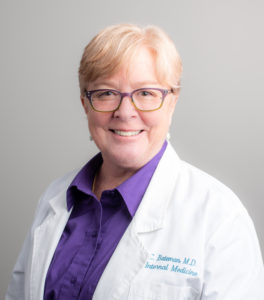Me and my ME
Who is me, or rather who am I, and what is ME? My name is Dr Bear Lawrence, and I’ve enjoyed an
interesting life. I’ve worked as a delivery driver in Norway, a helicopter tour pilot in the Caribbean,
and a flight instructor in Oregon. In the UK I’ve been a sales assistant, gardener, landlord, biomedical
engineer and award-winning inventor. I’ve even been lucky enough to have raced motorbikes, karts
and yachts.
Suffering from stress as an overloaded university lecturer, I caught a viral infection and was in bed
for seven weeks. Afterwards, I found I was extremely tired all of the time. Doing ordinary tasks like
vacuuming or mowing the lawn would leave me completely exhausted, my limbs shaking with
fatigue so much so that it made drinking and eating difficult. I thought it might be as a result of being
in bed for so long, so I persevered. Five months later, I was no better and my GP diagnosed me with
Myalgic Encephalomyelitis, or simply ME.
ME is also known as Chronic Fatigue Syndrome (CFS), or ME/CFS. It’s probably been around since the
dawn of mankind, Florence Nightingale had it, yet it is relatively unknown to most people and it is
not well understood. Whilst it can have many symptoms, the primary symptom is fatigue. It can
affect anyone, including children, although it is much more common in women, and people aged
between mid-20’s and mid-40’s. Whilst some people do recover, most have it to varying degrees
long-term, and some are bed-bound and dependant on the care of others.
Physical exercise is good for the health and recovery of healthy, sick people and even those with
chronic conditions. This is in sharp contrast to people with ME/CFS. They can experience a significant
worsening of symptoms, one to three days after physical, mental or emotional activity. This is a
hallmark symptom of ME/CFS and is called post-exertional malaise (PEM). Recovery after activity in
ME/CFS people is prolonged, varying between individuals, lasting days, weeks or even months.
These periods are commonly known as ‘crashes’.
Most people develop ME/CFS after a bacterial or viral infection, trauma or stress, and particularly
combinations of these. Symptoms can be wide ranging, vary from person to person, day to day, and
even hour to hour. In addition to fatigue, I suffer muscle ache and joint pain, joint stiffness, nausea,
headaches, IBS, sore throat, and sleeping difficulties to name but a few symptoms.
One very common symptom is ‘brain fog’. The combination of fatigue and cognitive difficulties, can
be debilitating and extremely depressing. Yes, unsurprisingly, mental health problems are common
with ME/CFS. To do the jobs I have done have required me to be variously articulate, intelligent,
strong with stamina, have an ability to multi-task and have excellent spatial awareness. Now, some
days I can have trouble speaking, reading, writing, or counting. My concentration span can be
miniscule, I can have poor short-term memory and long-term memory recall. On another day, I can
write an article such as this.
If you see me walking my dog Rosie, I probably look healthy and well. But I am disabled, some
disabilities are not visible. If we were to stop and talk, I may not remember your name, or even who
you are, even though we may have met many times. I no longer trust myself to cook when home
alone for fear of starting a fire, or turn on taps in case I cause a flood, which I have done.
There is no specific test for ME/CFS, it is diagnosed by symptoms and ruling out other conditions.
There is no cure for ME/CFS. A quick look on YouTube or social media will suggest otherwise. Plenty
of people will suggest a plethora of potions and practices. Pomegranate juice, potassium
supplements, pilates, acupuncture with porcupine prickles, rolling in the poop of an alpaca, or
preparations from a pangolin. Puerile humour aside, some of these may work for some people, and
maintaining a healthy diet and regime is unlikely to be detrimental. What has struck me in my search
for help is that so many like me are searching for an end to the pain and suffering. And many find it.
The most common cause of death in ME/CFS people is suicide.
Whilst we have no magic cure, some symptoms can be treated or managed. For most people, the
most effective tool is to manage their own energy levels by pacing themselves. I describe my own
ME/CFS as ‘five and two’. Let us say a normal working week is five 8-hour days, plus two days for rest
and relaxation. My illness is such that for two days of light or moderate activity, I need five days
recovery, lying in bed or on the couch, which is not the same as relaxing. To give that more context,
if I walk Rosie twice a day, say for a little over half an hour in total, that is four hours over a week, or
a quarter of my available energy for a week. Everyday I have to make decisions about what I will do,
or not do, to pace myself. Do too much, and I ‘crash’, bed-ridden until I recover.
If you’re still reading, thank you. Together we have raised awareness of ME/CFS, and how disability
can be invisible. I lack the energy to be an activist, but not to be an awarenessist. If you too would
like to be an awarenessist, please share my story. Thank you. Be kind to yourself and to others.
A date for your diary, May 12th is International ME/CFS Awareness Day. Wear blue, be an
awarenessist, and tell at least one person about ME/CFS.
This essay was submitted as part of the Reflections of ME/CFS, FM, and Long COVID Awareness Day Virtual Event on May 14th, 2024.

 Lucinda Bateman, MD, is a renowned clinician, researcher, and educator. Her Johns Hopkins University Medical School training instilled an approach to care that she has employed throughout her career - the patient comes first and the unknown or unexplained does not equate to a lack of proper and compassionate care. Since starting her own practice in 2000, she has served on six boards or committees, been the principal investigator for 45 studies, authored/coauthored 40 journal articles, served as adjunct instructor and adjunct assistant professor in the University of Utah Departments of Preventative Medicine, Internal Medicine, and Anesthesiology, and lectured around the world.
Lucinda Bateman, MD, is a renowned clinician, researcher, and educator. Her Johns Hopkins University Medical School training instilled an approach to care that she has employed throughout her career - the patient comes first and the unknown or unexplained does not equate to a lack of proper and compassionate care. Since starting her own practice in 2000, she has served on six boards or committees, been the principal investigator for 45 studies, authored/coauthored 40 journal articles, served as adjunct instructor and adjunct assistant professor in the University of Utah Departments of Preventative Medicine, Internal Medicine, and Anesthesiology, and lectured around the world.